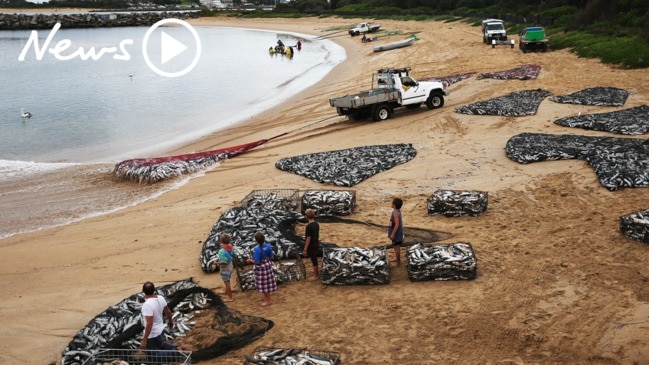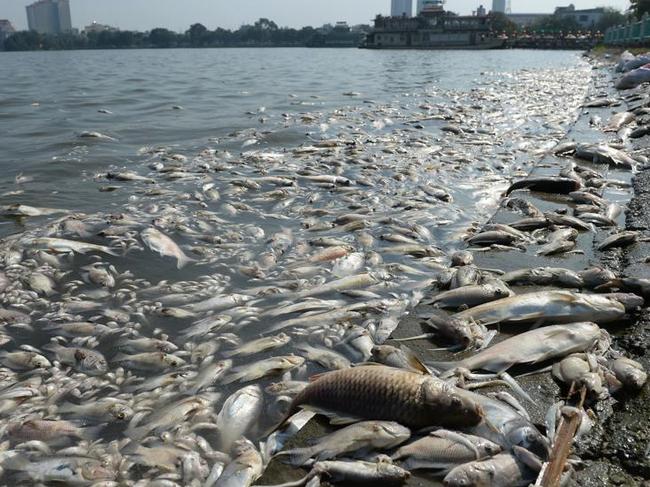Too ‘rosy’: fish report gets fried
With the fishing industry under scrutiny like never before, a new report has been criticised for appearing to overstate the prevalence of species caught in Australian waters.

Sustainability
Don't miss out on the headlines from Sustainability. Followed categories will be added to My News.
The latest report card of commercially caught fish in Australian waters has been criticised for being unnecessarily misleading because it suggests 85 per cent of fish stocks are either sustainable or recovering, when the actual number is 66 per cent.
In a briefing note on the report, the Fisheries Research and Development Corporation (FRDC) stated: “Of the stocks assessed, 85.71 per cent were classified as either ‘sustainable’ or ‘recovering’.”
But a table of data in the same briefing note shows 63.3 per cent of fish stocks were classified as sustainable and 3.35 per cent were deemed recovering: a total of 66.66 per cent.
Why the different numbers? When fish stocks that were categorised “negligible” or “undefined” (lacking data) are included, the proportion of sustainable and recovering stocks is 66.66 per cent; but when the “negligible” and “undefined” cohorts are not included in the overall tally, the proportion of sustainable and recovering stocks jumps up to 85.71.
Adrian Meder from the Australian Marine Conservation Society said some 70 stocks of fish were categorised as “undefined”, and excluding them from the overall count gave the impression that things were “considerably more rosy” than they really were.
Mr Meder said the FRDC report provided important information, but the overall picture was “very concerning”.

“We’ve spent a lot of money to fix the sins of the past in regard to the overfishing of the 1990s, but progress has not just slowed – it looks like it’s stopping. We’re continually pushing our fish stocks very hard,” he said.
The health of fish stocks should not just be determined by species prevalence, but the “complete picture of sustainability,” Mr Meder said.
The 2020 assessment, which included 71 more stocks than the previous report in 2018, showed an overall slight improvement in sustainable fish populations. In 2018, 62.5 per cent of fish stocks were deemed sustainable.
The report, to be released on Tuesday to coincide with World Oceans Day, comes amid increasing international and domestic criticism of the global fishing industry, with the Netflix documentary Seaspiracy and the Richard Flanagan book Toxic highlighting the problems of discarded nets, wasteful bycatch, unregulated operators and overcrowded, disease-ridden fish farms.

Crispian Ashby from the FRDC said the Australian fishing industry was “quite heavily regulated” compared to other industries, with on-board monitoring by human observers, as well as CCTV and satellite tracking of vessels.
Regarding the issue of bycatch, Mr Ashby said the Australian industry was “pretty proactive with regard to bycatch and its reduction”.
Prawn trawlers in Australian waters were now using turtle excluder devices “and this has significantly reduced the amount of turtle bycatch that has occurred almost to zero,” he said.
Australian fishing companies had also been proactive in chasing illegal operators out of commercial fishing zones, and were undertaking the collection of discarded netting material, he said.
Two discarded nets recently retrieved in northern Australian waters by the Australian Fisheries Management Authority were more than 800 metres long and weighed an estimated 3.7 tonnes.
Duncan Leadbitter, Australian Director of the international Aquaculture Stewardship Council, said Australia ranked about 55th on the world scale of production for fishing, and our consumption of seafood had plateaued at about 20 kilograms per person per year.





